Articles of 2009
RODRIGUEZ’ DEATH REMINDER OF HOW MUCH BOXERS RISK (
There is a scene in The Godfather– the 1972 classic I reference often because it’s such a damn fine example of moviemaking and also because of its parallels to so many situations that crop up in our everyday lives – in which war hero Michael Corleone offers to murder the drug kingpin and corrupt police captain who had conspired for a hit on Michael’s father, Mafia boss Vito Corleone. The would-be hit turned into a near-miss (Vito survives) and the nervous plotters arrange for a meeting with Michael, in a public place, to broker a peace between the warring mob factions.
Michael’s older brother, Sonny, disregards consigliere Tom Hagen’s advice to make the peace and decides that the plotters need to be executed, for revenge. Michael volunteers to be the triggerman, a suggestion Sonny at first rejects. War heroes often do their killing at long range, Sonny notes, but for this job Michael would need to pull out a hidden pistol and do the job up close. And up close is an entirely different matter.
I have personally attended three boxing matches in which one of the fighters suffered fatal injuries, but the first two did not impact me nearly as much as did the third, in which Mexican-born, Chicago-based super bantamweight Francisco “Paco” Rodriguez suffered a brain bleed in his 10th-round stoppage at the hands of Teon Kennedy. The highly competitive bout took place this past Friday night at Philadelphia’s Blue Horizon and was for the vacant USBA 122-pound championship.
After referee Benji Esteves Jr. waved the slugfest off and a wobbly Rodriguez went back to his corner, he sat on his stool, looked up at his older brother, Evaristo Rodriguez Jr., and said, “Dude, I’m getting a headache. I’m sleepy … tired.’ And then his body went limp.
Within minutes, the 25-year-old Rodriguez, a married father of a 5-month-old daughter, was being strapped onto a gurney and rushed to nearby Hahnemann University Hospital for emergency surgery to relieve pressure on his bleeding brain.
Two days later, after hospital officials advised members of the Rodriguez family that Francisco’s injuries were so severe that all brain activity had ceased, the painful decision was made to unhook him from the machine that was allowing him to breathe. The five-time Chicago Golden Gloves champion passed away minutes later, becoming the first fighter in Philadelphia to die as the result of injuries sustained in a fight since Jody White succumbed after a fourth-round knockout by Curtis Parker, also at the Blue Horizon, on March 21, 1978.
J Russell Peltz promoted Parker-White as well as Kennedy-Rodriguez and he said the memory of each will always stay with him. What had been an incredible main event, with two-way action so scintillating the near-sellout crowd gave the combatants several spontaneous ovations, took a 180-degree detour into tragedy.
“Parker really turned it on in the third round, but White was allowed to come out for the fourth,” Peltz said in recalling the previous ring death. “I remember thinking, `Why isn’t the corner stopping the fight? Or the referee?’ The fight did get stopped, (White) went to his dressing room and his body just shut down. He was dead on arrival at St. Joseph’s Hospital.”
But if Jody White was in way over his head against Parker, what should anyone do when the stricken fighter is giving as good as he gets? When the ring physician checks on him after almost every round and sees no evidence he is in any particular distress? Is there blame that can and should be assessed, or is it just one of those cruel accidents that happen periodically when two men swap punches inside a roped-off swatch of canvas?
As the only representative of a major news organization (my paper, the Philadelphia Daily News at ringside, the task of reporting on Francisco Rodriguez’ doomed struggle to survive primarily fell to me. It was the front-page story in our Monday editions and there were several follow-up articles. Given the Rodriguez family’s prominence in Chicago boxing circles, Francisco’s death also was major news there.
The other two death fights I attended were different. They involved undercard guys whose participation in a big-time event headlined by a superstar wouldn’t even have been notated were it not for the fact that were so grievously injured. When an unconscious Jimmy Garcia was removed from the ring at Caesars Palace on May 6, 1995, the victim of an 11th-round TKO by WBC super featherweight champ Gabriel Ruelas (Garcia died on May 19), I was probably 30 yards removed from his corner instead of the 3 feet I was for Rodriguez. The marquee attraction – Oscar De La Hoya vs. Rafael Ruelas in a lightweight unification bout — had yet to come on, so Garcia’s desperate straits received only a mention in the fight report I filed that night.
But, as Sonny Corleone might say, up close is different. It’s personal. I spoke to Francisco Rodriguez’ relatives, to his handlers, and one thing immediately became clear. This was someone’s son, brother, husband, friend. He was the father of an infant girl. There was heartbreak in the voices of the people I interviewed, enough tears to float an aircraft carrier, and initially a refusal to believe that any of this could actually be happening. If enough prayers were offered up, surely Francisco would open his eyes, smile and assure those who had rushed to his side that everything would be all right. But prayers aren’t always answered. Sometimes – thankfully, not often – boxing matches become fights to the finish. Death is the shadow that hovers over everyone who enters the ring and accepts danger as an occupational risk.
I never knew Francisco Rodriguez. I never got the opportunity to speak to him. Oh, sure, I would have interviewed him after the fight, which Kennedy was leading by narrow margins on all three judges’ scorecards at the time of the stoppage. I probably would have asked him about the trouble he found himself in during a shaky first round, how he had survived that round on a questionable eight-count given by Esteves (who ruled that Rodriguez had avoided being knocked down because he was held up by the ropes, even though he hadn’t touched the ropes), and how he rallied after that with a furious body attack. I’m sure I would have asked him for his thoughts on Kennedy, one of the brighter prospects to come out of Philly in recent years.
Instead, I asked the tough questions of myself. Why had I become so emotionally involved in the plight of this dying fighter and not by that of Jimmy Garcia? How close do you need to get to someone, even a stranger, to feel empathy?
Certainly, no member of the Rodriguez family is assessing blame for what happened. Boxing is the business Francisco chose, and it was with the full understanding that bad things can and do sometimes happen in a fight. Good things happen, too. Those who take up the trade have an appreciation of the rewards that can accrue with success, but they also understand the risks.
“I talked to Russell Peltz, the promoter,” said Alex Rodriguez, one of Francisco’s managers, and his other older brother. “I told him I don’t know this Kennedy guy, I don’t know what he’s feeling now, but I hope he understands that my family is not upset at him. I hope he goes on to achieve everything my brother wanted to achieve. I wish him nothing but the best. He’s a good fighter, and I know Paco would not want him to stop doing what he does because of this. Fighters fight. You can’t stop being who and what you are.”
It is a message that has been conveyed for as long as there has been boxing. Fighters fight. They do what they have to do, and, hopefully, both men walk away at the end whole and healthy.
In his 1969 autobiography, Sugar Ray, the great Sugar Ray Robinson reflected on his June 24, 1947, welterweight title defense in Cleveland in which challenger Jimmy Doyle was pummeled so thoroughly that he died.
“The idea is to hit your opponent, to batter him if necessary,” Robinson told his collaborator, Pulitzer Prize-winning New York Times sports columnist Dave Anderson. “If you don’t, he’ll hit and batter you. Every so often, a boxer dies. Whenever that happens, some people like to shout that boxing should be outlawed, that it’s unnecessarily brutal. Most of the time, the shouters are politicians who know it’s an easy way to get their name in the newspapers. But an occasional death doesn’t mean a sport should be abolished. If that were the case, auto racing should be abolished. So should football.”
Interestingly, Rodriguez’ death comes amid a flurry of positive boxing news that refutes the notion that the sport is, well, dying. Floyd Mayweather Jr.’s comeback victory over Juan Manuel Marquez did quite well on pay-per-view, Manny Pacquiao’s domination of Miguel Cotto did even better, and the buzz attendant to a Pacquiao-Mayweather matchup, which is being negotiated, already is that of a thousand angry hornets’ nests. In Philadelphia, the iconic Bernard “The Executioner” Hopkins will make his first appearance in his hometown in seven years when he takes on Mexican tough guy Enrique Ornelas this Wednesday, a tune-up for his long-delayed 2010 rematch with Roy Jones Jr.
Even at the local level, boxing is enjoying something of a rebirth. Kennedy-Rodriguez was the best fight staged in Philly in several years, and Peltz said the city’s talent is rising to a level that hasn’t been seen in some time.
A boxing death, however, always serves to tamp down enthusiasm and causes a civilized society to rethink its value system. It happened after Emile Griffith bludgeoned Benny “Kid” Paret past the point of no return in 1962, when Ray “Boom Boom” Mancini put down Duk-Koo Kim for the permanent count in 1982.
Jay Larkin, the former boxing chief at Showtime, recalls his own crisis of conscience after the pay-cable network televised the Gerald McClellan-Nigel Benn fight in London on Feb. 25, 1995. The back-and-forth action – Benn retained his WBC super middleweight title on a 10th-round knockout — was so spectacularly entertaining that Showtime cited it as its Fight of the Year. But McClellan was left brain-damaged, blind and confined to a wheelchair, where he remains to this day.
“I gave a lot of thought to my getting out of the business after that fight,” Larkin said.
Larkin continued to approve good matchups, and Mancini – who remains conflicted to this day about his role in the death of Duk-Koo Kim and its aftermath – continued to fight them, at least for a while. But there is collateral damage whenever someone dies in the ring, and even the winner of such bouts is often psychologically scarred. After Kim died, his grieving mother committed suicide by ingesting a bottle of pesticide and, not long after that, the fight’s referee, Richard Green, also took his own life.
“It was horrible,” Mancini said. “People – some very young – would come up to me and ask what it’s like to kill somebody. I couldn’t believe the lack of compassion. I still don’t.
“The only thing that kept me going is that I relied on my faith. I prayed and prayed. I prayed for peace, and I made peace with what I’d done. I asked God to forgive me, and I think He did.
“You tell yourself that this is the business you chose. You seek answers, but you don’t always get them. Mostly, I asked myself, `Why him and not me?’ I’d only recently won the (WBA lightweight) title. I had the opportunity to financially secure my future and, fortunately, I was able to do that.
“But after that fight, I lost my zest for boxing. And without that zest, that passion, I knew it was the beginning of the end for me. I was already looking to get out. Besides, my style wasn’t made for having a long career anyway.”
Mancini said he would be glad to counsel the Rodriguez family and Kennedy if they sought him out.
“I knocked out guys after the Kim fight,” he noted. “I had guys in trouble along the ropes. But I knew if I froze up, that probably would be me getting the worst of it. And once that happens, once you become afraid to just let it go, you’re finished as a fighter.”
Peltz points out that the deaths of Paret and Kim led to stricter safety regulations which are more stringent and less flexible than can be found in most team sports. He said he’s seen football players get their “bell rung,” head woozily to the sideline where they had smelling salts waved under their nostrils before being sent back out on the field again. Concussions and how to treat them are the new hot-button issue in pro football.
“In boxing, you get knocked out, you have to undergo a thorough medical examination and be held out for 60 days,” Peltz said. “If that were the case in football, there probably wouldn’t be an NFL. There wouldn’t be enough players left to field a team.”
Sports, especially contact sports, carry a certain implied risk. Is boxing any more dangerous than, say, auto racing? Would Dale Earnhardt be around today had he learned to hook off the jab instead of trying to maneuver a race car at 200 mph around a banked oval in heavy traffic? Marathoners have been known to drop dead because of the stress placed on their internal organs. Should we ban distance running? Mountain-climbing? Bull-fighting? Spear-fishing off the Great Barrier Reef, which can turn aquatic adventurers into a shark’s lunch?
And it’s not just standard athletic activities that draw us in. If safety were our only concern, someone surely would have prevented daredevil Evel Knievel from trying to jump his motorcycle over all those parked buses, the fountains at Caesars Palace and the gorge at Snake River Canyon. Circuses would be precluded from using animal acts (trainers can and sometimes are attacked by lions and tigers and bears, oh my) and trapeze and high-wire performers. You can get killed up there and, by golly, even the great Karl Wallenda fell from the tightrope and to his death.
We watch because of the skill of the participants, because they do what most of us can’t, and because there often is a riveting element of danger. We live vicariously through others, a community of spectators imagining ourselves as that wide receiver coming over the middle to snag a high pass, the NASCAR driver accelerating toward the checkered flag, the boxing champion who stands toe-to-toe with a fearsome rival and lands that payoff punch first.
Francisco Rodriguez never won a professional title, but he leaves this life better for having passed our way. Seven of his harvested organs are going to five recipients, including one of his kidneys to his gravely ill uncle, a gift of life that further imprints upon me his worth as a human being.
“My brother had a perfect heart, perfect lungs, perfect kidneys, perfect pancreas,” Alex said. “Because of him, other people will have a chance for better health, more birthdays, the fulfillment of their own dreams. Paco is going to continue walking through this world in them.”
If there has ever been a nobler sentiment expressed in boxing, or anywhere, I have yet to hear it.
Those interested in making a contribution to the Francisco Rodriguez Estate Fund, can do so at Chase Bank branch, using account number 707331062. You’ll feel better for having done it. I know I did.
-
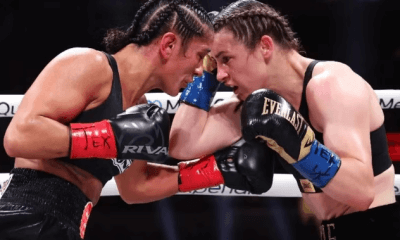
 Featured Articles2 weeks ago
Featured Articles2 weeks agoResults and Recaps from New York Where Taylor Edged Serrano Once Again
-
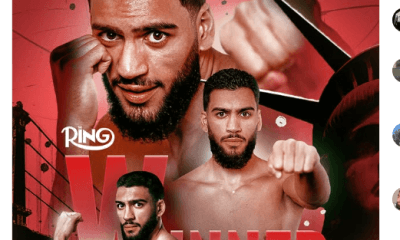
 Featured Articles2 weeks ago
Featured Articles2 weeks agoResults and Recaps from NYC where Hamzah Sheeraz was Spectacular
-
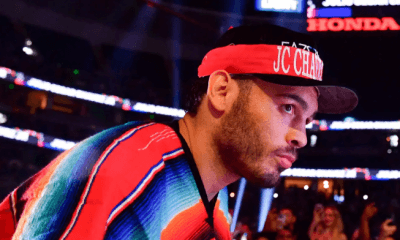
 Featured Articles3 weeks ago
Featured Articles3 weeks agoFrom a Sympathetic Figure to a Pariah: The Travails of Julio Cesar Chavez Jr
-
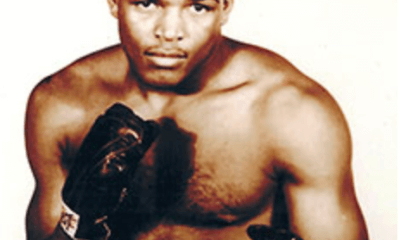
 Featured Articles2 weeks ago
Featured Articles2 weeks agoPhiladelphia Welterweight Gil Turner, a Phenom, Now Rests in an Unmarked Grave
-
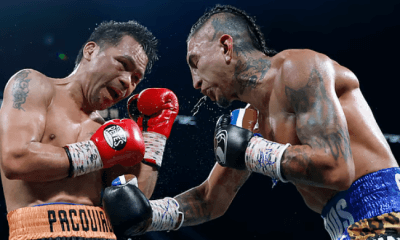
 Featured Articles1 week ago
Featured Articles1 week agoManny Pacquiao and Mario Barrios Fight to a Draw; Fundora stops Tim Tszyu
-
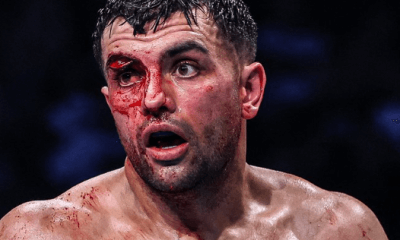
 Featured Articles3 weeks ago
Featured Articles3 weeks agoCatterall vs Eubank Ends Prematurely; Catterall Wins a Technical Decision
-
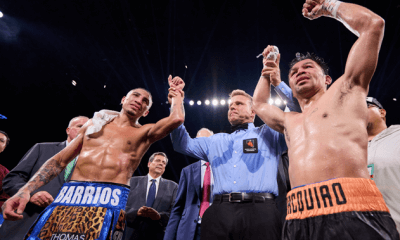
 Featured Articles6 days ago
Featured Articles6 days agoArne’s Almanac: Pacquiao-Barrios Redux
-
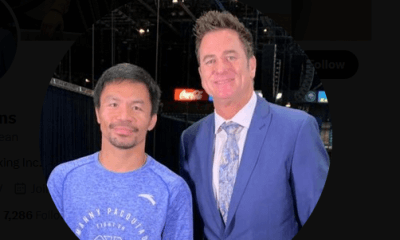
 Featured Articles2 weeks ago
Featured Articles2 weeks agoFrom the Boondocks to the Big Time, The Wild Saga of Manny Pacquiao’s Sidekick Sean Gibbons













